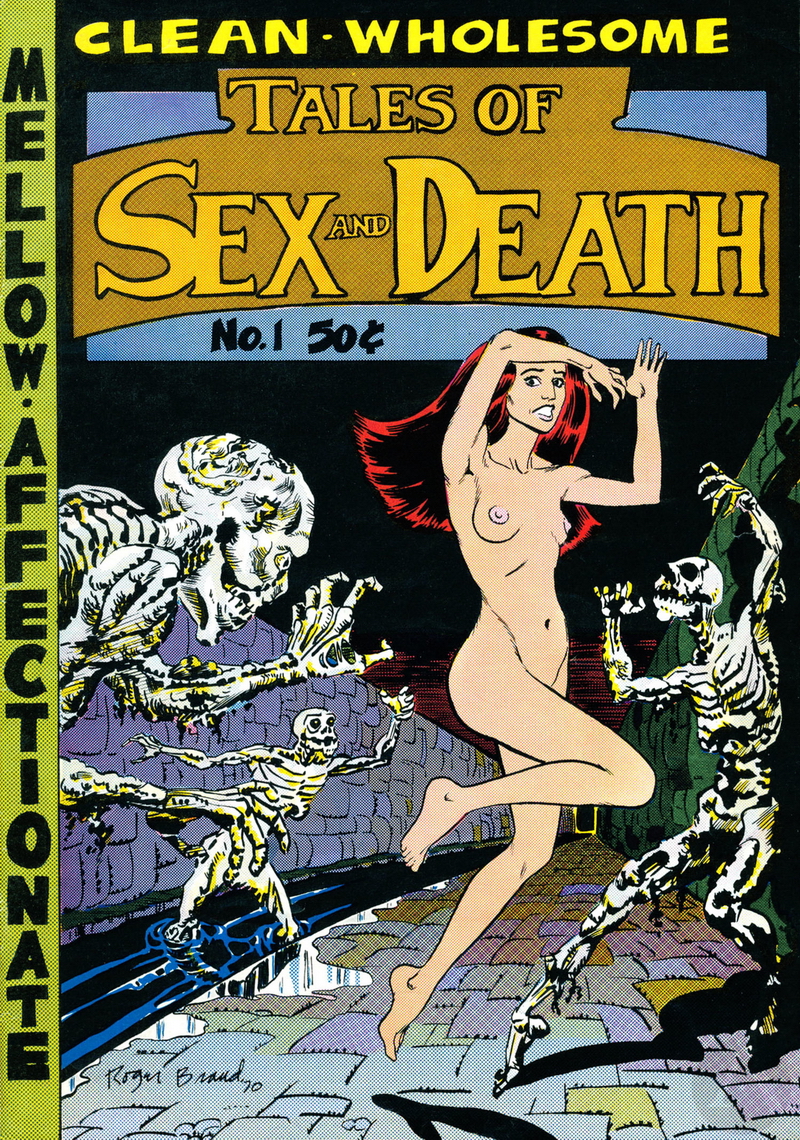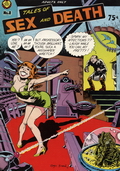tales of sex and death

tales of sex and death
Print Mint (Fall 1971-75)
Roger Brand was born in 1943 and grew up north of Oakland California in the small town of El Sobrante. He went to high school with Joel Beck, who shared Brand’s sense of humor, passion for cartooning and taste for booze, and they remained lifelong friends. Like Beck, some of Brand’s earliest work appeared in the early 1960s in UC Berkeley’s college humor magazine The Pelican. In the summer of ’66 Brand and his future wife Michele moved to New York, where he soon became an assistant to Wally Wood and contributed to Wood’s Witzend. He became a popular fan artist for fanzines like Weirdom, All Stars and Voice of Comicdom while also working as a pro for Warren magazines (Creepy, Eerie) and mainstream comics (Jungle Jim). Brand also worked as an assistant to another legendary comics creator, Gil Kane, in the late ’60s.
Brand’s first endeavors in underground comics came in New York during his work for the tabloids East Village Other and Gothic Blimp Works. When San Francisco became ground zero for undergrounds in 1969, Brand and Michele migrated back to his home state to catch the fever. He had befriended several of the early pioneers in New York (and was one himself, for that matter) and began hanging out with the “hip crowd” at Gary Arlington’s San Francisco Comic Book shop. He contributed to Bijou Funnies and Insect Fear while earning steadier income with advertising art for early porn films and a weekly comic for the sex/sleaze tabloid Candid Press in Chicago.
In early 1971, Brand was already finishing up the first issue of Real Pulp Comics for the Print Mint when he began editing the first issue of Tales of Sex and Death, which would become one of his finest achievements in comics. He recruited some of the same talent for Sex and Death that he did for Real Pulp; Bill Griffith, Kim Deitch, and S. Clay Wilson, but brought in some new artists as well; Justin Green, Paul Rodgers and Rory Hayes. Green and Griffith both produced some of their best early work for Sex and Death #1, and Brand contributed one of his strongest stories (“The Big Sewer”).
When this series was launched in the summer of ’71, Brand was perhaps at the peak of his professional powers. Though he, like Joel Beck, had been a heavy drinker for years, his addiction was still relatively under control. Well, perhaps “under control” is overstating it a bit. Let’s say that he was still young enough for his body to bounce back from his alcohol abuse. In any case, by underground standards Brand was riding high, as editor of two successful (or at least high-quality) comics anthologies and contributor to multiple other titles.
Brand would sustain his momentum for at least a couple more years, editing the second issue of Real Pulp and contributing to Tales of the Leather Nun, Insect Fear #3, Douglas Comix and the Nickel Library. But bear in mind, outside of Gilbert Shelton and the Zap Collective, most underground artists were living hand to mouth in the early ’70s. By the time Brand and the Print Mint got around to producing Tales of Sex and Death #2 in 1975, Brand had lost his wife and his steady income, was living in cheap hotels or borrowed rooms, and survived on little more than Rainier Ale and food stamps.
But he could still pull it together when it came to comic books. The second issue of Sex and Death was nearly as strong as the first, as Brand recruited Spain Rodriguez, Jay Lynch, Dave Geiser and Charles Dallas to join returning contributors Green, Wilson, Hayes and Deitch.
The anthology was discontinued after the second issue, and by the end of the ’70s Brand was barely scraping by, as his drugs and booze had taken their toll. He died in 1985 at the age of 42 and it seems only his friends and peers recall his greatness. As mentioned elsewhere on this site, at least we have comic gems like Real Pulp Comics and Tales of Sex and Death to remind us of how good Brand really was when he was in his prime.

 01 ophelia necker
01 ophelia necker 02 brain
02 brain